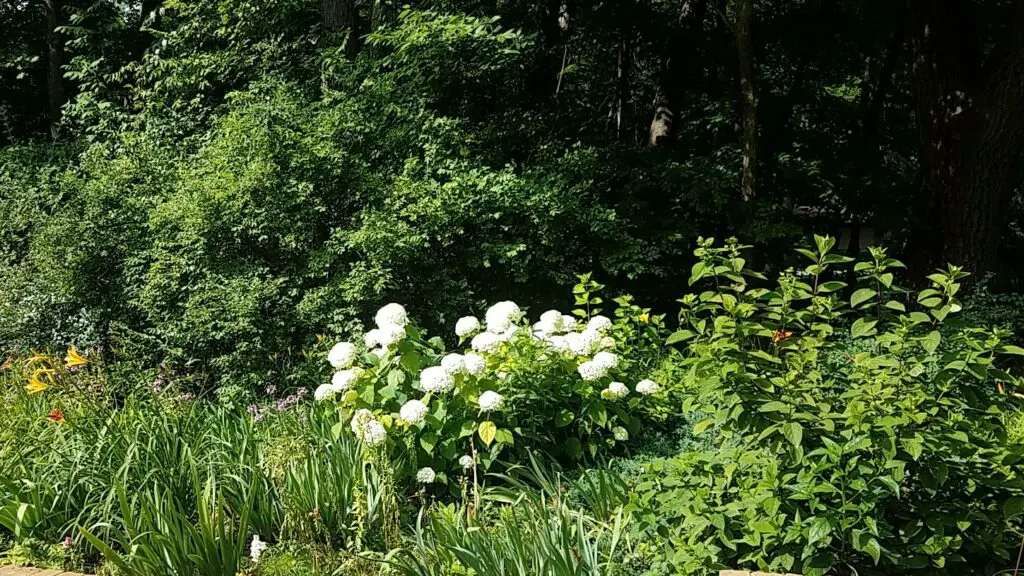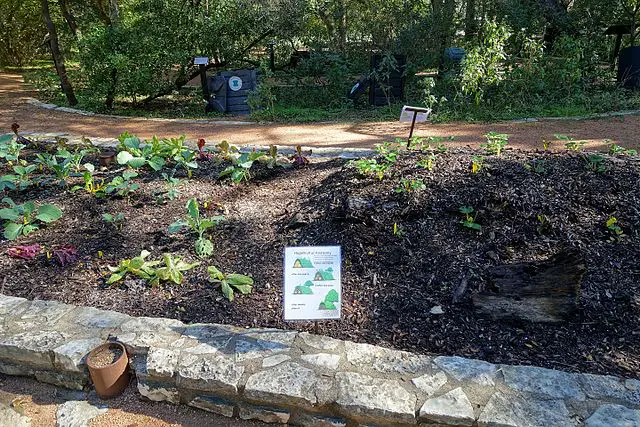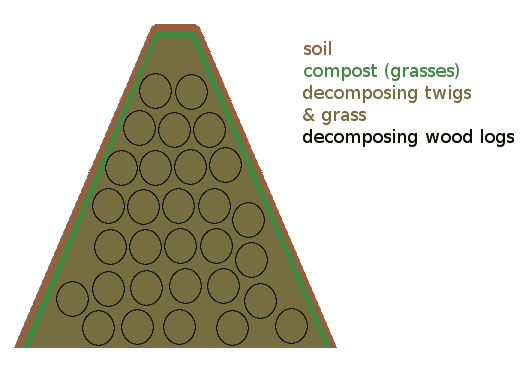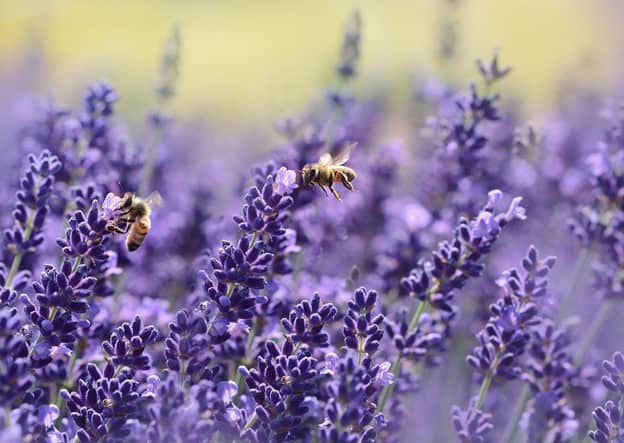“Because life is fueled by the energy captured from the sun by plants, it will be the plants that we use in our gardens that determine what nature will be like 10, 20, and 50 years from now.”
Plants grow happily when the soil, temperature, and other environmental conditions are in accordance with their nature. This is why gardening with only native plants is always your best bet for an easy-to-maintain garden. You cannot grow every plant everywhere. The United States is a vast country and home to the most significant Temperate Flora compared with the rest of the world.
Fossil fuel burning, use of synthetic fertilizers, pesticides, and discharge of improperly treated wastewater into the water bodies have caused alarming air, water, and soil pollution levels. There is a need to restore the ecological balance, minimize chemical use, move towards nature. All of this is possible through growing native plants. Native species are easy to propagate, maintain, and they grow abundantly and efficiently in their native habitat, producing oxygen and reducing pollution every moment of the day.
A Selection of US Native Trees:
Red Maple (Acer rubrum):
The tree that beautifies your garden first in the autumn will be the Red Maple with red, orange, and Yellow-colored flowers. Red Maple is native to Florida and Texas. Different suitable cultivars of red maple are Scarlet Sentinel, Shade King, North-wood, Burgundy Bell, Autumn-Flame, Armstrong, and Autumn Radiance.
- Red maple is a temperate tree, grows well in almost every region of the United States, most abundantly in Central North America and mid-South Climates. Its growth stunted where the temperature goes below -40 degrees Celsius.
- It requires partial shade to full sunlight to grow (choose the partial shady place in your lawn to grow Acer Rubrum. It can be grown in almost every kind of soil (clayey, salty, acidic, and loamy) but not salty soil.
- It is elegantly grown in lawns, residential streets, and ornamental gardens. Mainly propagated through seeds (the tree produces seeds in late spring) but can also be raised through stump cuttings. It is recommended to purchase the plant grown from seed to have a strong root system and be true-to-type.
- It is a deciduous tree and sheds leaves at the end of autumn in preparation for the winters. In the spring, new leaves come out to replace the foliage shed.
- No need for annual pruning
- Irrigation is likely not needed after the plant is established.
- These plants should not need additional fertilization as long as the leaves are left to decompose naturally over the roots.
- The average lifespan of Red Maple is 100 years.
Cottonwood/Poplar tree:
- Black poplars: Populus deltoids (commonly known as Necklace poplar native to eastern North America’s species) and Populus fremontii (locally called as Fremont’s cottonwood) western North America’s species)Balsam Poplars: best grow in the North American regions with cool temperate climates.
- The Poplar tree plays a vital role in the phytoremediation process and can be raised as a tree and a bush.
- It can be used in some constructed wetland filtration systems and is commercially grown to remediate soils polluted with heavy metals and for the treatment of sewage wastewater.
- You can very quickly grow a poplar tree in your garden by planting a cutting taken from a one-year-old poplar tree stem, it has vigorous growth habits, and its canopy can spread to 30 feet in 9-10 years.
White Oak (Quercus alba):
Oak is the National tree of the United States of America. The White Oak is quite well adapted to much of the US climate conditions and is one of the prominent hardwood trees native to North Central America. It is called white oak due to the whiteish color of the underside of the leaves. The large, wide canopy and thousands of leaves are good for adding oxygen to the environment and absorbing high concentrations of CO2.
Star Fruit Tree (Averrhoa carambola):
It is a tropical to semi-tropical climate tree, widely grown in Central America, South America, Hawaii, and Caribbean regions. It can be raised as a tree and a bush depending upon the space available in the garden, produces leaves and fruit (its fruit is edible, rich in Vitamin C, 7% carbohydrates, 1% protein/fruit) throughout the year. Irrigate the young tree every 4-5 days, and then weekly irrigation is enough.
American Sweetgum (Liquidambar styraciflua):
The Sweetgum tree (also nicknamed “alligator-wood”) is one of the most popular ornamental trees (recognized by its five-cornered star-shaped leaves of reddish-orange color) of the warm temperate regions of Eastern North America and Tropical areas of Mexico and Central America. You can maintain the young plant of sweetgum into a medium-sized, spreading, or a heightened narrow canopy tree depending upon the space available in your garden.
Flowering Dogwood (Cornus florida):
When you own a small garden in your house, the flowering dogwood would be a good choice for you. It is a beautiful white/pink colored flowering tree, produced in the spring and reddish-pink foliage during the autumn.
Cornus Florida is native to South Central United States, grows best in slightly acidic soils, requires partially shaded conditions, and can grow 33 feet tall.
It is very easy to grow and propagate a dogwood plant; you can easily grow it from seed or shoot at home. The average life span of a dogwood tree is almost 60 years.
- Locally available cultivars are Gulf Coast Pink, Plena (Anthracnose resistant), Jean’s Appalachian Snow, and Kay’s Appalachian Mist (both are Powdery Mildew Resistant), Purple Glory (Stem Canker resistant).
Tree planting instructions for home gardeners:
- The average life span of most trees is not less than 30 years, so the correct placement for your tree is critical to its long-term success and your long-term happiness.
- Consider the tree’s mature size and sunlight requirements when choosing a site.
- Dig a hole at least a foot wider than the tree’s root mass and about as deep as the existing root mass.
- Don’t plant the tree too deeply in the hole. Every plant has a depth at which it ikes to grow. Nursery-bought trees often have too much soil piled on top of the roots due to cultivating around the plant. It is essential that you clear the excess soil off of the top of the roots before deciding on a final planting depth.
- More trees die from planting too deep than too shallow, so always err on the side of too high.
- Once the tree is standing in the hole at the correct depth, backfill the hole with friable soil and perhaps some aged compost.
- Use the excavated soils to form a slight soil berm around the plant to allow more effective watering for the first growing season.
A Selection of US Native Flowering Plants:
Rose:
Rosa Carolina, which is native to eastern North America, can be found in all the states and provinces of the US. Rosa gymnocarpae, which is native to western North America, can be found in almost all the states and regions of the US also.
How to propagate a Rose:
- Take rose stem cutting (in late Jan or start of Feb) of 8-12 inches in length and pencil thickness from the parent plant.
- Place the bottom end in any available growth mixture, give it sunlight and keep it moist.
- Apply natural fertilizers as needed to avoid chlorosis.
Sunflower (Helianthus annuus):
Helianthus is a genus of hundreds of species cultivated commercially for ornamental and phytoremediation features. In gardens, annual species are grown, including:
- Helianthus annuus: “American Giant, Giant Sun-gold, Yellow Disk, Solar Eclipse, and Autumn Beauty” are locally available cultivars in the local plant nurseries. Propagated through seeds, they do not demand spectacular conditions to grow but need full sunlight.
- They are planted in a constructed wetland for the filtration of heavy metals like Ni, Cd, Cu, etc.
Cone Flower (Echinacea purpurea):
It is an excellent ornamental flowering plant of temperate regions that flowers throughout spring and autumn. Once established, it is a drought-tolerant plant that loves partial shade and grows well in moist to dry soils. It is successfully propagated through seeds or clump, or root cuttings. “Giant Ruby” is one of the popular cultivars grown widely.
Coneflower is a medicinal plant used to treat throat infections, stomach cramps, coughs, snake bites, etc.
Blanket flower (Gaillardia spp.):
A species-rich genus “Gaillardia” contains numerous traditional and selective cultivars to beautify your garden with their red, pink, orange, yellow, and purple colored flowers. Almost all the species are native to the USA, for example;
- Gaillardia amblyodon (the Maroon blanket flower)
- Gaillardia aristata (common Gaillardia)
- Gaillardia multiceps (onion blanket flower, commonly grown in rock gardening)
- Gaillardia pulchella (Fire-wheel, grows best in North America climatic conditions)
Flower planting instructions for home gardeners:
- Late summer to early fall is the best time to grow cuttings. Dip the bottom end in a rooting medium or keep dipped in a glass of water and change the water daily.
- Once the cutting develops roots, then plant it in a suitable environment.
- Annuals and perennials need well-drained and somewhat porous soil for root establishment.
- In pots, try to add compost material and soil at the ratio of 1:2 and shelter them to survive during frost periods.
- Water new planting according to need. Feel the soil beneath the plant. If it is moist, it is good; if dry, it needs water. Pretty simple.
A Selection of US Native Shrubs:
American Canberrybush (Viburnum trilobum):
It’s a beautiful, deciduous shrub that produces white, small flowers in June-July that cover the whole shrub presenting a very fresh look. It can be easily grown through softwood cuttings in spring. The advantage of planting the Viburnum is that it produces leaves that clean up the volatile organic compounds in the air, release oxygen, and in the summer, has beautiful flowers. No need to add chemical fertilizers; just adding a few kitchen scraps from time to time will be enough for a healthy Cranberry.
White Sage (Salvia apiana):
White sage also called “sacred sage,” is an evergreen shrub native to southwestern regions of the US. It requires full sunny conditions and well-drained, sandy loam soil to grow correctly and flower at the appropriate time. If your garden soil is not suitable for this shrub, you can grow it in planter boxes to avoid overgrowth, soil problems and add structures (in the form of colorful planter boxes containing green shrubs) to your garden.
Hydrangea:
Hydrangea (grown for its large ornamental flowerheads of beautiful colors) is a genus of many species, either evergreen or deciduous native to a wide range of climates in America. It is either grown as a shrub (spread rapidly, making colonies through colonization) or may become a small tree if maintained. It likes to grow under the canopy of hardwood, so you can create a Focal Point in the garden using a specimen tree and Hydrangea around its trunk. The locally cultivated species of Hydrangea in the North and Southern regions of the US are:
- Smooth/White Hydrangea (Hydrangea arborescence): “Annabelle” is the best cultivar; most cold-hardy and Hydrangea roots have medicinal importance.
- Oak-leaf Hydrangea (Hydrangea quercifolia): flowers are creamy-white when they emerge, turn to pink as they grow, and finally attain brown color in the autumn.
- Blue Hydrangea (Hydrangea macrophylla): has naturalized in the Americas, deciduous, “Mop-head and Lace-cap” are the locally available main cultivars.
- Silver-leaf Hydrangea (Hydrangea radiata): like the cool and moist climate, less tolerant to the heat and shade, produce silvery-white flowers, “Samantha and Greer” are the locally available cultivars.
References:
Mastuura, M. I. S. F.; Dias, F. R. T.; Picoli, J. F.; Lucas, K. R. G.; Castro, C.; Hirakuri, M. H. (2017). “Life-cycle assessment of the soybean-sunflower production system in the Brazilian Cerrado” (PDF). The International Journal of Life Cycle Assessment. 22 (4): 492–501. doi:10.1007/s11367-016-1089-6. S2CID 112613303.
Encheva, J. Christov, M and Shindrova, P. Developing Mutant Sunflower Line (Helianthus Annuus L.) By Combined Used Of Classical Method With Induced Mutagenesis and Embryo Culture Method. Bulgarian Journal of Agricultural Science [accessed October 15, 2014]; 14(4):397-404
Awtry-Smith, Marilyn J. The Symbol of Spiritualism: The Sunflower. Reprinted from the New Educational Course on Modern Spiritualism. Appendix IV in Talking to the Other Side: A History of Modern Spiritualism and Mediumship, ed. by Todd Jay Leonard. ISBN 0-595-36353-9.
Denk, Thomas; Grimm, Guido W.; Manos, Paul S.; Deng, Min; Hipp, Andrew L. (2017), Gil-Pelegrín, Eustaquio; Peguero-Pina, José Javier; Sancho-Knapik, Domingo (eds.), “An Updated Infrageneric Classification of the Oaks: Review of Previous Taxonomic Schemes and Synthesis of Evolutionary Patterns,” Oaks Physiological Ecology. Exploring the Functional Diversity of Genus Quercus L., Springer International Publishing, 7, pp. 13–38, doi:10.1007/978-3-319-69099-5_2, ISBN 978-3-319-69098-8
Liquidambar styraciflua: a renewable source of shikimic acid. Liza B. Enrich, Margaret L. Scheuermann, Ashley Mohadjer, Kathryn R. Matthias, Chrystal F. Eller, M. Scott Newman, Michael Fujinaka and Thomas Poon, Tetrahedron Letters, 2008, volume 49, pages 2503–2505, doi:10.1016/j.tetlet.2008.02.140
Tuell, J. K., Fiedler, A. K., Landis, D., & Isaacs, R. (2014). Visitation by wild and managed bees (Hymenoptera: Apoidea) to eastern US native plants in conservation programs. Environmental Entomology, 37(3), 707-718.
Padullés Cubino, J., Cavender‐Bares, J., Hobbie, S. E., Hall, S. J., Trammell, T. L., Neill, C., … & Groffman, P. M. (2019). Contribution of non‐native plants to the phylogenetic homogenization of US yard floras. Ecosphere, 10(3), e02638.
Bradley, B. A., Early, R., & Sorte, C. J. (2015). Space to invade? Comparative range infilling and potential range of invasive and native plants. Global Ecology and Biogeography, 24(3), 348-359.









